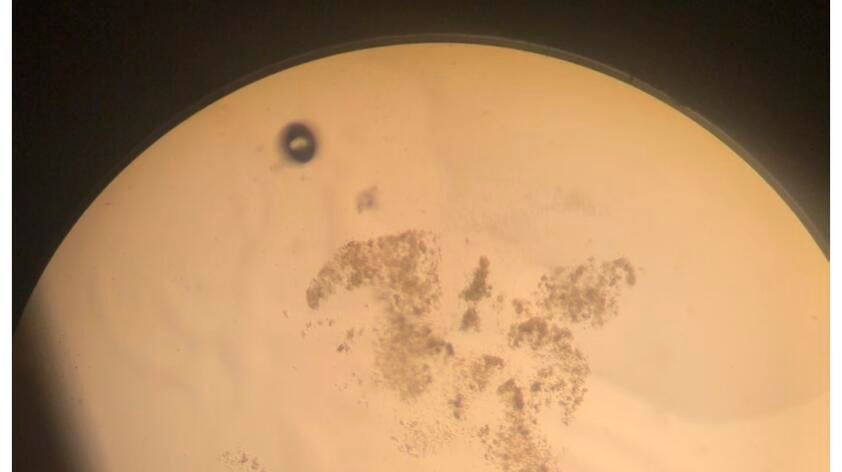
Putting eggs in a basket, step 3: What an egg wants. What an egg needs.
As Carly and Parker explained (Putting eggs in a basket, step 1 and step 2), it has been a great challenge to perform the first OPU (ovum pick up) procedures on our southern white rhinos and to develop protocols in the laboratory to mature and fertilize the oocytes. Our successes were made possible by the incredible teamwork of everyone involved; from the wildlife care specialists, to the veterinary team, our research group, and—of course—our wonderful animals at the Nikita Khan Rhino Rescue Center. The OPU procedures provided not only the precious oocytes from the rhinos, but also many other important cells and fluids that hold valuable information about how to mature and fertilize a rhino oocyte.
My role in this project was to be a passionate hunter for fluids and cells that were obtained during the OPU procedures and in the laboratory during the in vitro techniques. I was so excited to snag every little piece of hidden information that resides outside the oocyte in order to improve our understanding of the rhino oocyte’s needs. My main question was, “What does the rhino oocyte need and want in order to successfully mature and generate an embryo?”
The truth is, the oocyte isn’t alone in these complex, exciting early steps; it requires two things: 1) the presence and support of the essential cells surrounding it; 2) the perfect environment, packed with nutrients, hormones and energy sources, to make it mature and develop into an embryo.
First, I collected and stored many of the specialized cells that closely surround the oocyte during maturation. These cells, called granulosa or cumulus cells, are tightly attached to the oocyte and are essential for its survival and communication with the environment in which they mature. Granulosa cells are so intimately connected to the oocyte that without them the oocyte can’t mature. If the oocyte is in the wrong environment, the granulosa cells immediately communicate that information to the oocyte and it stops developing.
These specialized cells are a treasure trove of information about the oocyte. They convey signals about what the oocyte needs during maturation and the oocyte communicates back to them its status and energetic needs. After the oocyte matures and is fertilized, the granulosa cells are no longer needed, so this is when I collected them from the culture dish. As our labs have slowly reopened during the pandemic, I have been analyzing what the cells were communicating during oocyte maturation to determine the metabolic requirements of the oocyte.
The second key factor I will study is the environment, more specifically the fluid (‘medium’) in which we mature the oocyte. The oocyte spends many hours in a medium formulated to provide energy and supplements for its development. I preserved several samples of the medium that the oocytes consumed during their maturation so I can analyze what components the oocyte utilized and what they didn’t use. This way I can improve the medium recipe with all the supplements and energy supply the oocyte needs to begin its journey to becoming an embryo.
The most important energy source for oocyte maturation is a type of simple sugar, glucose. My goal is to understand how much glucose the rhino oocyte needs to mature and to be fertilized. The granulosa cells and the media hold valuable clues of the competency or incompetency of the oocyte and I am very excited to work on the analysis of both.
Lastly, as Carly explained in her blog (Putting eggs in a basket, step 2), many of the oocytes we retrieved matured, but most didn’t develop into embryos. One oocyte was successfully fertilized, but stopped developing during early cleavage. All the oocytes that stopped developing hold important information about what went wrong during in vitro maturation and why they didn’t fertilize. As sad as it was to see the oocytes not developing further, it was actually important for me to take the arrested oocytes, preserve them and analyze them to investigate why they stopped developing. I will be looking for markers of oocyte maturation and development.
Once I analyze the oocytes I will have answers about what happened, which will help us optimize our system and produce rhino embryos! It’s so exciting to have the opportunity to discover what the rhino oocyte needs. I look forward to finding out what our team can do to give the oocyte the energy and support that it needs to be a happy egg! Stay tuned...













